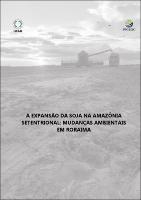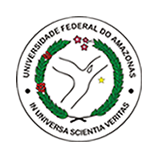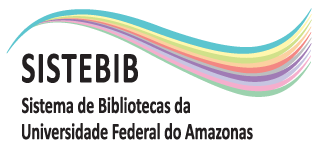| ???jsp.display-item.social.title??? |


|
Please use this identifier to cite or link to this item:
https://tede.ufam.edu.br/handle/tede/10512| ???metadata.dc.type???: | Dissertação |
| Title: | A expansão da soja na Amazônia Setentrional: mudanças ambientais em Roraima |
| Other Titles: | The Expansion of Soybeans in Northern Amazonia: Environmental Changes in Roraima La expansión de la soja en la Amazonía Septentrional: cambios ambientales en Roraima |
| ???metadata.dc.creator???: | Vidal, Bruno Sarkis  |
| ???metadata.dc.contributor.advisor1???: | Silva Neto, João Cândido André da |
| ???metadata.dc.contributor.referee1???: | Thevenin, Julien Marius Reis |
| ???metadata.dc.contributor.referee2???: | Nogueira, Ricardo José Batista |
| ???metadata.dc.description.resumo???: | Nos últimos 50 anos, a soja foi o principal grão que se expandiu nas áreas agrícolas do Brasil e do Mundo. O estudo identifica um novo paradigma na produção de soja no Brasil, destacando o avanço da fronteira agrícola na Amazônia Setentrional. O objetivo principal da dissertação é analisar as transformações ambientais resultantes da expansão da cultura da soja em Roraima, buscando explicar as mudanças no uso e cobertura da terra em uma perspectiva temporo-espacial, e analisar a vulnerabilidade ambiental da área de estudo. Dividida em três capítulos, a pesquisa inicia discutindo os fundamentos teóricos da Geografia Física Crítica, explorando a relação entre sociedade e natureza e os conceitos de ambiente e território. Em seguida, caracteriza-se a área de estudo localizada no centro-sul de Roraima, abordando a geoeconomia e geopolítica da soja na região, além de analisar a história da expansão da cultura da soja e os principais atores envolvidos nesse processo. O terceiro capítulo se dedica a analisar as mudanças ambientais e os conflitos em Roraima, utilizando dados de uso e cobertura da terra, vulnerabilidade ambiental e relatos de campo para ilustrar e analisar essas transformações. Os resultados são observados a partir de uma revisão sistemática da literatura, trabalho de campo e mapeamento do uso e cobertura da terra em Roraima. O uso de um Sistema de Informações Geográficas (SIG) foi fundamental na análise mais aprofundada dos fatores e consequências associados à expansão da soja na região. Os resultados destacam um aumento de 8.750% na produção de soja em Roraima em 12 anos, refletindo o avanço da frente pioneira e a integração da área de estudo nos circuitos globais de comercialização. Isso viabiliza a soja e seus derivados como peças-chave na economia estadual, representando 59% do total dos produtos exportados para o ano de 2023. Contudo, observa-se que o aumento da produção está associado à conversão de áreas naturais para áreas de agropecuária, acompanhada pelo aumento da degradação das pastagens e do desmatamento ao longo dos últimos anos, o que colabora para o aumento da vulnerabilidade ambiental na área de estudo. Apesar da classe de vulnerabilidade baixa predominar, ocupando 73,85% da área total, as classes de vulnerabilidade média (32,27%) e alta (0,58%) já demonstram impactos ambientais relevantes, especialmente em áreas críticas sujeitas a degradação e maior pressão ambiental, o que exige atenção para mitigar esses impactos. |
| Abstract: | Over the past 50 years, soybeans have been the primary grain to expand in agricultural areas in Brazil and around the world. This study identifies a new paradigm in soybean production in Brazil, highlighting the advancement of the agricultural frontier in Northern Amazonia. The main objective of the dissertation is to analyze the environmental transformations resulting from the expansion of soybean cultivation in Roraima, aiming to explain the changes in land use and land cover from a temporalspatial perspective and to assess the environmental vulnerability of the study area. Divided into three chapters, the research begins by discussing the theoretical foundations of Critical Physical Geography, exploring the relationship between society and nature, and the concepts of environment and territory. Next, the study area, located in the south-central part of Roraima, is characterized, addressing the geoeconomics and geopolitics of soybeans in the region, and analyzing the history of soybean expansion and the main actors involved in this process. The third chapter focuses on analyzing environmental changes and conflicts in Roraima, using land use and land cover data, environmental vulnerability, and field reports to illustrate and assess these transformations. The results are drawn from a systematic literature review, fieldwork, and mapping of land use and land cover in Roraima. The use of a Geographic Information System (GIS) was crucial for a more in-depth analysis of the factors and consequences associated with soybean expansion in the region. The results highlight an 8,750% increase in soybean production in Roraima over 12 years, reflecting the advancement of the pioneer front and the integration of the study area into global marketing circuits. This positions soybeans and their derivatives as key components of the state’s economy, representing 59% of the total products exported in 2023. However, it is observed that the increase in production is associated with the conversion of natural areas into agricultural land, accompanied by the degradation of pastures and deforestation in recent years, which contributes to the rising environmental vulnerability in the study area. Although the low vulnerability class predominates, covering 73.85% of the total area, the medium vulnerability class (32.27%) and the high vulnerability class (0.58%) already show significant environmental impacts, particularly in critical areas subject to degradation and greater environmental pressure, which calls for attention to mitigate these impacts. |
| ???metadata.dc.subject.cnpq???: | CIENCIAS HUMANAS: GEOGRAFIA |
| ???metadata.dc.subject.user???: | Roraima Soja Geografia Física Crítica Uso da Terra Vulnerabilidade Ambiental Soybeans, Critical Physical Geography Land Use Environmental vulnerability |
| Language: | por |
| ???metadata.dc.publisher.country???: | Brasil |
| Publisher: | Universidade Federal do Amazonas |
| ???metadata.dc.publisher.initials???: | UFAM |
| ???metadata.dc.publisher.department???: | Instituto de Filosofia, Ciências Humanas e Sociais |
| ???metadata.dc.publisher.program???: | Programa de Pós-graduação em Geografia |
| Citation: | VIDAL, Bruno Sarkis. A expansão da soja na Amazônia Setentrional: mudanças ambientais em Roraima. 2024. 142 f. Dissertação (Mestrado em Geografia) - Universidade Federal do Amazonas, Manaus (AM), 2024. |
| ???metadata.dc.rights???: | Acesso Aberto |
| ???metadata.dc.rights.uri???: | https://creativecommons.org/licenses/by-nc-nd/4.0/ |
| URI: | https://tede.ufam.edu.br/handle/tede/10512 |
| Issue Date: | 30-Oct-2024 |
| Appears in Collections: | Mestrado em Geografia |
Files in This Item:
| File | Description | Size | Format | |
|---|---|---|---|---|
| DISS_BrunoVidal_PPGEOG.pdf | 12.06 MB | Adobe PDF |  Download/Open Preview |
Items in DSpace are protected by copyright, with all rights reserved, unless otherwise indicated.




